




 |
 |
 |
 |
 |
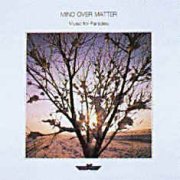 |
Music for Paradise (1987, 45.27) ***/TT½ParadiseBeing One (Air) One Being (Water) Changes in Being (Fire) Being Home Again (Earth) The End of Time Kandy Sweets The Silence |
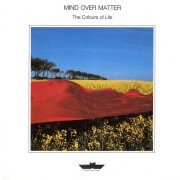 |
The Colours of Life (1988, 37.05) ***/½La Vie (the Dance of Life)Bali Sunrise (the Joy of Life) Ganga (the River of Life) Mountains of Karma (the Wheel of Life) |
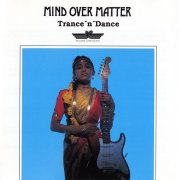 |
Trance'n'Dance (1990, 56.06) ***½/T½Children of the MidnightNight of Oblivion The March of the Seduced Children In Search of the Sunlight The Dawning of Bliss Spacelab Jack the Bear Mahatma The Silence |
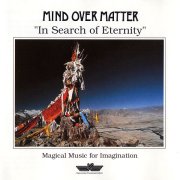 |
In Search of Eternity (1992, 42.39) ***½/TJourney to EternityBehind the Gates of Samsara At the Seam of Forever The Lotus is Opening Whispers From Beyond In Touch With Eternity Monolith Pilgrims of Eternity Dawn |
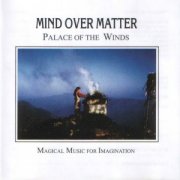 |
Palace of the Winds (1995, 51.10/73.20) ***/TT (TT½)Shangri-LaIn a Mogul's Garden Air India Rainy Kathmandu Sri Ram [CD adds: Roof of the World Himalaya Shangri-La (Short Version)] |
 |
Shambhala (1997, 54.50) ***/T½Dreamy KathmanduThe World of Koto Brahmaputra Shambala Distant Echoes |
Avatar (1998, 64.16) ***/TTT½ThunderchildMagic Garden Freak Street Avatar's Dream Avatar Beyond Thunderchild (the Radiocut) |
|
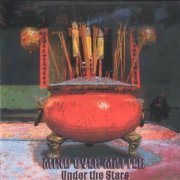 |
Under the Stars (2000, recorded 199?-99, 67.26) ***/TTTA Night in Mogul's GardenMello(w) Kathmandu Mahatma Gandhi Vive la Vie The Universe of Koto Drifting on Brahmaputra |
 |
Signs of Life: A Tribute to Pink Floyd (2000, 10.44) ***/TT[Mind Over Matter (as Mindala) contribute]Set the Controls for the Heart of the Sun |
Current availability:
Mellotrons used:
Klaus Hoffmann-Hoock had been making music of one sort or another for twenty years when he formed Mind Over Matter in the mid-'80s. Drawing together all his influences, not least those from the Indian subcontinent, his vision for the band was an electronic outfit with an 'ethnic' bent, operating towards the new age end of the spectrum, before it became a dirty word. Think: an Asian/European Kitaro and you won't be too far off the mark.
1987's Music for Paradise was their first release, fitting their stated remit like a glove, which means you'll either sit back, relax and love it, or start fidgeting, wondering when it's going to take off. That's actually a slightly unfair appraisal, as part three of the side-long Paradise, Changes In Being (Fire), picks up quite nicely, as you'd expect from its title, although the bulk of the album is possibly slightly too laid-back for its own good. Despite being recorded in 1986, there aren't too many digital horrors here, although Klaus seems quite proud of the fact that a DX7 was utilised on some tracks. The keyboard sounds are actually all very acceptable, particularly a rare '80s appearance from an M400 on a good half of the album's length. Part two of Paradise, One Being (Water), features background strings followed by an upfront flute part, then choirs under the guitar solo in part three, before a string part in the closing section. Background choirs under the narration on The End Of Time precede a more overt string line, but that appears to be your lot, as the choirs on Kandy Sweets are almost certainly the DX.
The following year's The Colours of Life carries on in a similar vein, opening with a baby's gurgling (makes a change from a crying one, at least), leading into the twelve-minute La Vie (The Dance Of Life). The other three tracks are practically indistinguishable from the first, at least to my ears, but for those looking for almost the ultimate in 'chill-out' music, this is probably near perfection. Klaus uses the Mellotron sparingly, with background choirs on La Vie, a brief harmonising flute part on Ganga (The River Of Life) and more of those 'almost not there' choirs on Mountains Of Karma (The Wheel Of Life), making for a pretty low overall rating. 1990's ominously titled Trance'n'Dance is actually far better than that title suggests, not to mention far less ethereal (i.e. dull) than its immediate predecessor. It's not all upbeat (closer The Silence is appropriately quiet), but it actually grabs the listener's attention every now and again, between the drifting bits. Mellotronically speaking, there are more of those background choirs on part 2 of the side-long Children Of The Midnight, The March Of The Seduced Children (language barriers, eh?) and flutes on part 3, In Search Of The Sunlight, plus choirs again on Spacelab, flutes and choir on Jack The Bear and flutes, choir and strings on Mahatma (careful, chaps).
1992 brought In Search of Eternity, Klaus' sleevenotes referring to his studies at a German Tibet-in-exile centre, although, going by his music, I'd say he was already deeply immersed in the Buddhist ethic by this point. Anyway, while less energetic than Trance'n'Dance, the album still has rather more poke than his first couple, although the AOR drum and synth sounds don't particularly improve matters. What does, though, is the ripping Hammond (from Patrick Kosmos) on Monolith and Pilgrims Of Eternity, which actually features a melody in the traditional sense, rather than merely a series of drifting chords. Very little Mellotron, though, with naught but a flute part and background choirs on part 3 of the side-long Journey To Eternity, The Lotus Is Opening, assuming that's what we're actually hearing. 1993's Live in Concert is Mellotron-free, while '95's Palace of the Winds is distinctly different to Music for Paradise, not least in the rock guitar and (wait for it) vocals on the side-long Shangri-La. Klaus' usual Indian Subcontinent influences pervade the record, not least in the sitars on a couple of tracks, although it's recognisably a European electronic album. Mellotronically speaking, there are flutes, choirs and strings on Shangri-La, distant choirs on In A Mogul's Garden and flutes and strings on Rainy Kathmandu; as for the CD's bonus tracks, Roof Of The World dates from as far back as '76, while Himalaya's from '93, with nicely upfront flutes and strings on the former.
'97's Shambhala is pretty similar to their debut from ten years earlier; at least you can say they're consistent. It's a perfectly pleasant blend of Eastern mysticism and Western electronic music, if entirely unengaging, which is probably the point. Herr Hoffmann-Hoock plays one or more of the multiple Mellotrons he's owned over the years, with ethereal flutes on The World Of Koto, Brahmaputra, although I suspect the ones on closer Distant Echoes are actually synth. Avatar, from a whole year later, is a very different album, being a far more dance-orientated effort than its predecessor, with (mostly wordless) vocals on several tracks. It's actually not bad for something that seems to be trying to ape Goan trance or somesuch, probably because of Hoffmann-Hoock's musicality and wildly varied influences, which isn't to say that EM devotees are necessarily going to like this. Mellotron all over the place this time, with strings under the (non-Mellotron) church organ, choirs and flutes on Thunderchild (and its edit, 'The Radiocut', stuck on the end of the disc), more distant strings on Magic Garden, what sounds like female, followed by mixed voices on Freak Street, strings and flutes on Avatar's Dream plus mixed choir and strings on Avatar itself.
2000's Under the Stars is a compilation of live tracks, four from the previous year and two earlier ones. It probably works well as a MOM primer, showcasing their different sides in an onstage setting, more dynamic than The Colours of Life, but without the trancey-ness of Avatar. Mellotron on most tracks, with distant strings on A Night In Mogul's Garden, rather more obvious ones, plus flutes, on Mello(w) Kathmandu, background, reverb-drenched strings, flutes and church organ on Mahatma Gandhi, strings on The Universe Of Koto and finally, flutes on Drifting on Brahmaputra under a real one, plus choirs and strings. Mind you, you get two sounds at once sometimes, so I don't know how authentic these might be...
Klaus is notorious for having owned, at one time or another, somewhere around thirty different Mellotrons, of all models. I met the man a few years ago at a festival in Holland, where he told me that the MkV was all well and good, but he never found two tape frames that were actually in tune with each other to the point where the instrument became usable! He told me he played Mellotron on several other Mind Over Matter albums, although, given his enthusiasm for his 'Megatron', a large sample bank of Mellotron sounds from his own collection, I'm slightly dubious about some of their later efforts. At least one Megatron sound (his recreation of the famous 'Watcher Of The Skies' patch) has found its way onto the M-Tron collection, should you wish to own such a thing. Klaus has played Mellotron on several other people's albums, not to mention his own side-project, the full-on 'Berlin School' of Cosmic Hoffmann, which may be more to the tastes of your typical EM fan than these. I shall review any other Mind Over Matter albums I come across, but I can't guarantee they'll be any more dynamic than this one. Incidentally, Music for Paradise was originally issued only on vinyl, gaining a CD issue in 1991, remixed with two extra tracks.
See: Cosmic Hoffmann | Signs of Life